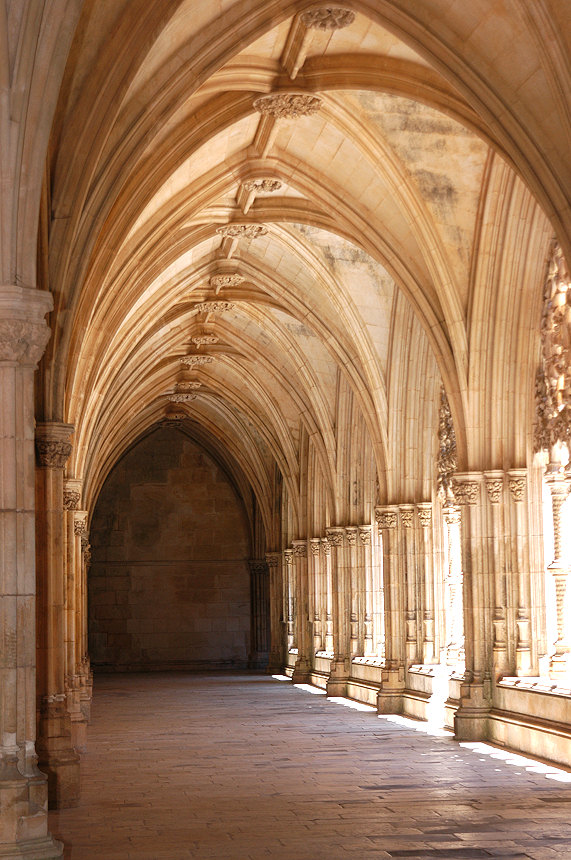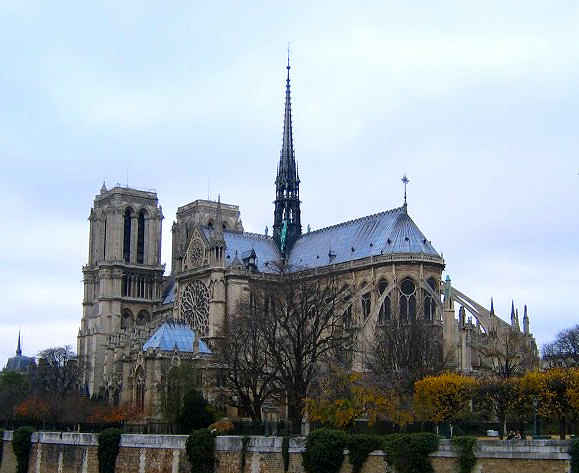
Royal Cloister at the Batalha Monastery, which is in the Gothic Stlye and built between 1448 and 1477.
This can be seen, for example, in the development of technology. It is simply false to say that technology calls for greater standardization. In pre-modern production, we note that the emphasis on the spiritual dimension curiously did not work to the detriment of the physical. On the contrary, it challenged the development of technology to meet both physical and spiritual needs.

Interior of the Cathedral in Salamanca, which contains the late Gothic style generally called Plateresque.
Take, for example, the development of the Gothic arch, flying buttress, and stained-glass window. All of these are the practical inventions developed to aid in the primarily spiritual pursuit of beauty, symbolism, and meaning that would be expressed in the higher, better illuminated, and acoustically-designed cathedral. They also involve feats of incredible technological daring specifically developed by medieval ingenuity to meet these esthetic needs.

New Cathedral and Old Cathedral in Salamanca, Spain. It was constructed between the 16th and 18th centuries in two styles: late Gothic and Baroque. Building began in 1513 and the cathedral was consecrated in 1733. It was commissioned by Ferdinand V of Castile and declared a national monument by royal decree in 1887.
“The technicians of the twelfth and thirteenth centuries, far from being traditionalists, were creating an entirely new concept of architecture, dynamic rather than static,” writes Lynn White. “In their cathedrals we see a sublime fusion of high spirituality and advanced technology.”*
* Lynn White, Jr. Machina Ex Deo: Essays in the Dynamism of Western Culture (Cambridge: MIT Press, 1968), 63.
John Horvat, Return to Order: From a Frenzied Economy to an Organic Christian Society—Where We’ve Been, How We Got Here, and Where We Need to Go (York, Penn.: York Press, 2013), 291.










